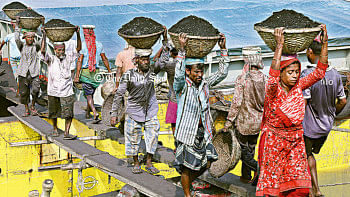Busting earthquake myths

The last week was one of panic for the people of Dhaka. As the waves of the devastating earthquake that hit Nepal shook buildings in Dhaka, people from all walks of life, wherever they were, ran out into the road. Little do we know that during an earthquake, that is the last thing one should do!
Given that our little country is one of the most prone to disasters, and the unstable condition of our infrastructure poses a great threat, it is sad how little aware we are of the dos and don'ts during an earthquake.
Dr Mehedi Ansary, Professor of BUET points out the biggest misconception among people, even journalists, is how they talk about the earthquake. He points out the difference between magnitude and intensity. "The Richter Magnitude is a constant value – the earthquake that hit Nepal was of magnitude 7.9. But intensity is a different thing – it gradually decreases like light. So the intensity of the earthquake was far greater in Nepal than what was felt in Bangladesh."
He points this out as he thinks this difference is a major one and when companies talk about building safety, they often use this lack of knowledge to mislead people. Intensity of an earthquake depends on certain factors; it is not a constant value like the Richter value. The intensity scale quantifies the effects of an earthquake on the Earth's surface, humans, objects of nature, and man-made structures on a scale from I (not felt) to XII (total destruction).
He also talks about a far more important point – the misconception that the safest thing to do during an earthquake is to rush out to the roads.
"The safest thing to do during an earthquake is to stand by a wall with an overhead beam, or crouch under a table with a pillow or something similar to protect the head," he says.
It is only after the first jolt has settled down that one should leave the house, and that too to an open place away from lamp posts and such. Experts even go far as to say that one should not even run to other rooms, let alone outside.
Another myth about earthquake survival is to stand underneath a doorway. In most cases, you are safer under a table. In modern houses, doorways are no stronger than any other part of the house and will not protect you from the most likely source of injury−falling or flying objects. Most earthquake-related injuries and deaths are caused by falling or flying objects, or by being knocked to the ground.
As Dr Ansary points out, the biggest mistake to make during an earthquake is to panic. This increases the chances of injury or even death. Stay calm if your feel the tremors and do not rush out of the house. Try to protect your head the best you can and only after the initial tremors are gone, venture out. Spread the word and keep calm.


 For all latest news, follow The Daily Star's Google News channel.
For all latest news, follow The Daily Star's Google News channel. 



Comments